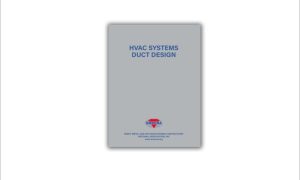Pierluigi Semenzato, Application Manager, Food Retail Solutions, CAREL
In recent years, the attention to and awareness of what we buy, has increased considerably, with positive effects also in terms of creating a more environmentally-sustainable economy.
With rare exceptions, the produce we carefully choose has undergone processing and has is some way been preserved and delivered to us. Nonetheless, we do not need to worry too much about the safety of the foods we have decided to purchase based on where they come from and whether they are safe.
This is because we are used to have an assumption or are generally confident that there are no risks, either with “natural” foods or industrial products.
This feeling is further guaranteed by modern regulations, control bodies, traceability systems and recall mechanisms that protect us and minimise the risks to public health.
What are the methods that ensure us such peace of mind today and how have they evolved?
Preserving food so that it can be consumed in times of need; is one of the first challenges mankind faced for its survival, apart from methods such as drying, salting and smoking date back to ancient times. The operations involved in correctly implementing these simple processes have developed and been passed on over the centuries. It has always been clear that neglecting a critical process or applying it badly meant losing a primary source of sustenance, and perhaps even endangering life. Hence the need for accuracy, experience, improvement.
For over 50 years, this approach, based on tradition, skill and commonsense, has not been replaced but rather integrated and regulated with modern processes and methodologies.
Many would have heard of HACCP (Hazard Analysis Critical Control Points), historically the first and still the most valid scientific control method.
It is basically a highly-effective quality process dedicated to the food sector, mandatory in many countries, and put simply is based on some fundamental principles:
• Know what you are doing well (know all the stages of processing)
• Identify all the risks and when they can be rectified
• Carry out checks appropriately, with the right tools
• Continuously improve the process; thanks to acquired experiences and possible avoided accidents.
• Document and trace everything accurately.
At the end of the day, not much different from what our grandmothers used to do when making preserves and jams, or butchers when preparing cold meats.
However, when dealing with hundreds of millions of consumers, tonnes of food and international trade, common sense and good intentions are not enough.
These cases require the expertise of specialists (food technologists, biologists, chemists, veterinarians, agronomists …), who draft specific guidelines for each segment of the food sector (good practices) and develop production processes and control methods (e.g. HACCP, or PDCA “continuous improvement” techniques).
Having done this – the primary obligation for every operator in the food sector – there is another important step to be taken in a business where criminal interests and counterfeiting may endanger all of the commitment and the image among consumers-users, that is, to provide consumers with a reliable quality guarantee:certifications, markings, production regulations etc.
Whether mandatory or voluntary certifications, the value and credibility of such tools is ensured by a national and international control system (accreditation, supervision, inspection).
Each control body must therefore be authorised, recognised as suitable, credible, independent and impartial, so that the checks carried out are mutually recognised as being valid.
Each country has a national accreditation body, which in turn refers to an international system. (ref. international standard ISO/IEC 17011, Regulation (EC) 765/2008 for European Union accreditation bodies…).
Then there are systems such as GFSI (Global Food Safety Initiative, which brings together control schemes such as SQF, BRC, IFS, FSSC, GLOBAL G.A.P. BAP and Canada GAP), as the operators themselves, the food industry and distribution sector also need guarantees in the supply and production chain.
In the same way, it is also important to ensure that the tools, equipment and materials used in food processing are suitable for the specific use. Indeed, these must make a significant contribution to increasing safety, reducing risks, limiting or preventing errors and assisting operators.
In this regard, there are mandatory standards (e.g. European product standards) or certification processes that guarantee that the equipment used has been carefully analysed regarding all the significant aspects and is approved for the food sector, so as to be easily integrated into a HACCP procedure, for example.
All of this can be summed up by the phrase “From Field to Fork”: every element, from the field to the end consumer, is therefore important and fundamental for the safety and quality of food, from the products to the tools and methods used, including of course the people who devote themselves to this with passion and commitment.
Cookie Consent
We use cookies to personalize your experience. By continuing to visit this website you agree to our Terms & Conditions, Privacy Policy and Cookie Policy.















